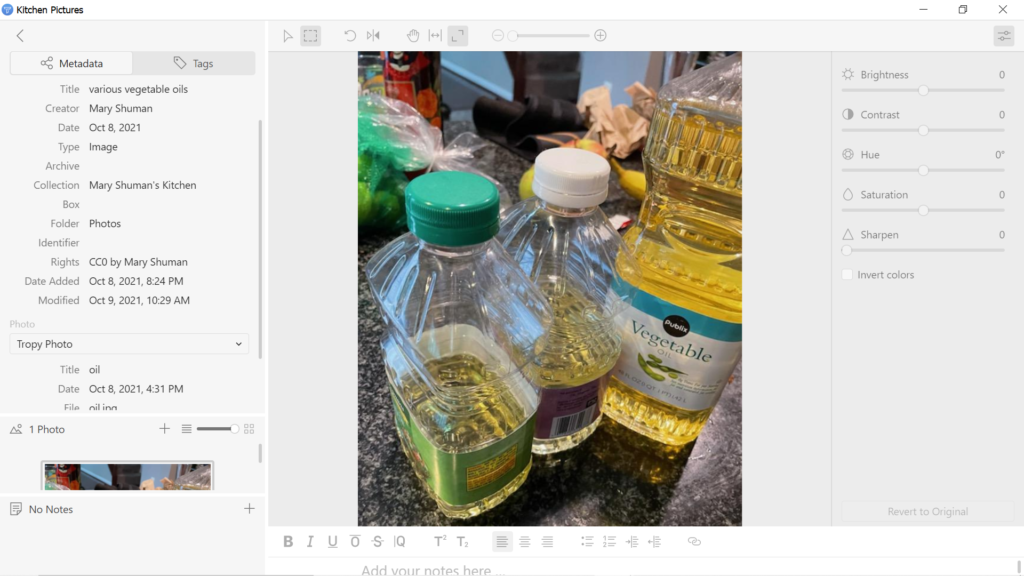
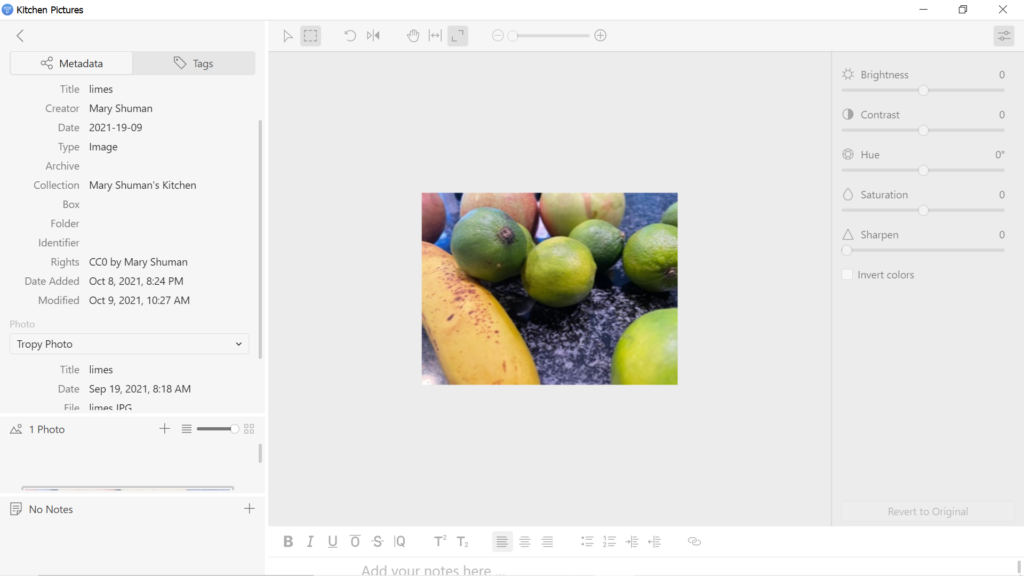
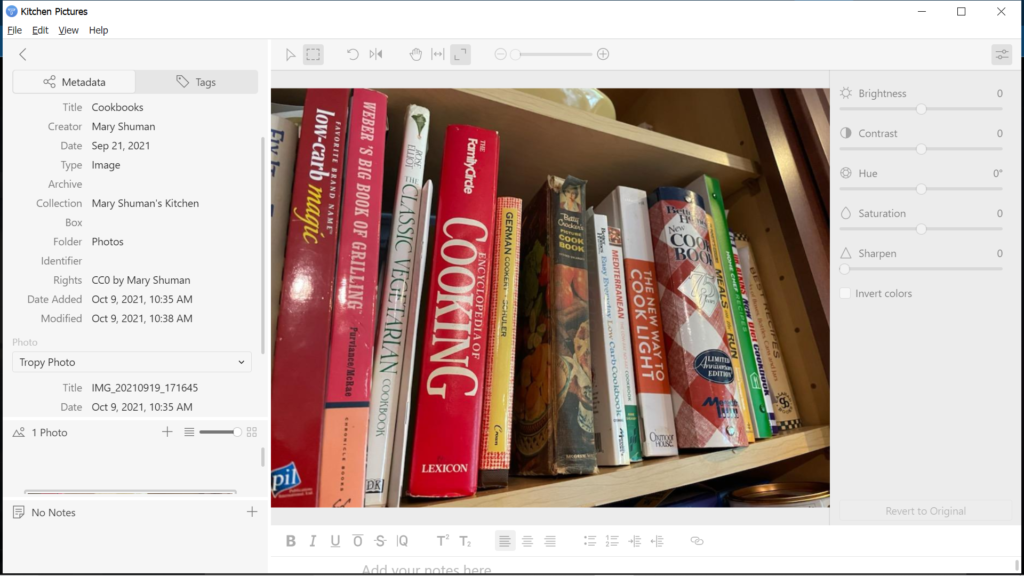
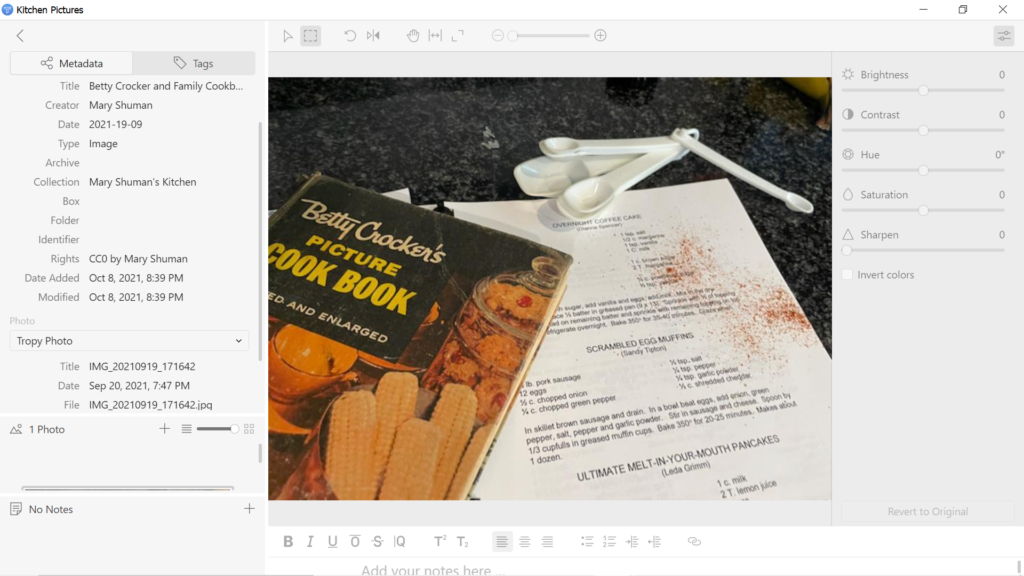
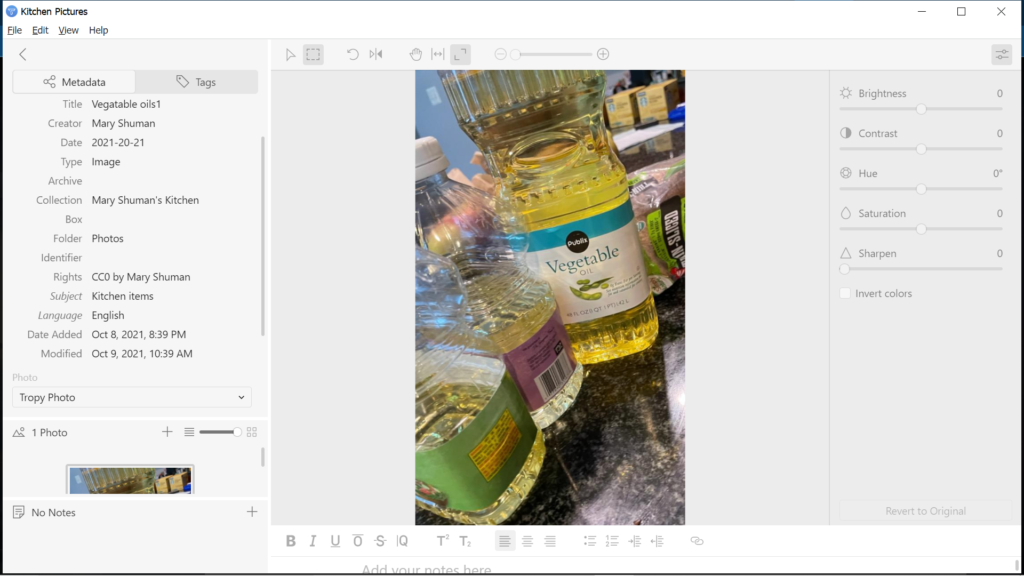
Metadata for images is valuable by the ability to search by text information versus image scrolling. Large projects with multiple images or primary sources placed into metadata categories also allow a file system for ease of use. As I am new to learning Tropy and metadata, other fields that would help keep track of photos would be google image, IPTC embedded metadata for internet use. There are multiple websites that you can upload pictures for research or personal use. The embedded metadata will help internet searches for these images. The photographer can view the camera used and metadata embedded by the digital camera used. Most images are already tagged with embedded metadata from any smartphone. This includes the date, time, geotagging of location as EXIF metadata format. These metadata categories can be removed for privacy reasons or, if needed, can be added using different image metadata formats for internet searches. IPTC metadata allows the photographer to add embedded data that is more extensive than the original EXIF Format. Therefore, a list of other fields that will enable you to publish to the internet should be added may including keywords for easier search. One other metadata program for me to be familiar with in the future is Adobe products like Photoshop.[1] Different categories for images can allow the creator to add modified dates, keywords, IPTC, address, copyright information, camera used, light, and how to license or buy the image. NFT’s are also a new way to buy and catalog digital art and photography by cryptocurrency. Metadata becomes imperative, especially copyright.
[1] Singh, Gurpeet. “Understanding Metadata for Photographers.” June 23,2020. What is Metadata in Photography and How to use it? (pixpa.com).